The Engaged Scientist
KEYS High School Student Internship Program
Connected Science Learning January-March 2019 (Volume 1, Issue 9)
By Marti Lindsey, Heather Ingram, and Bob Mittan
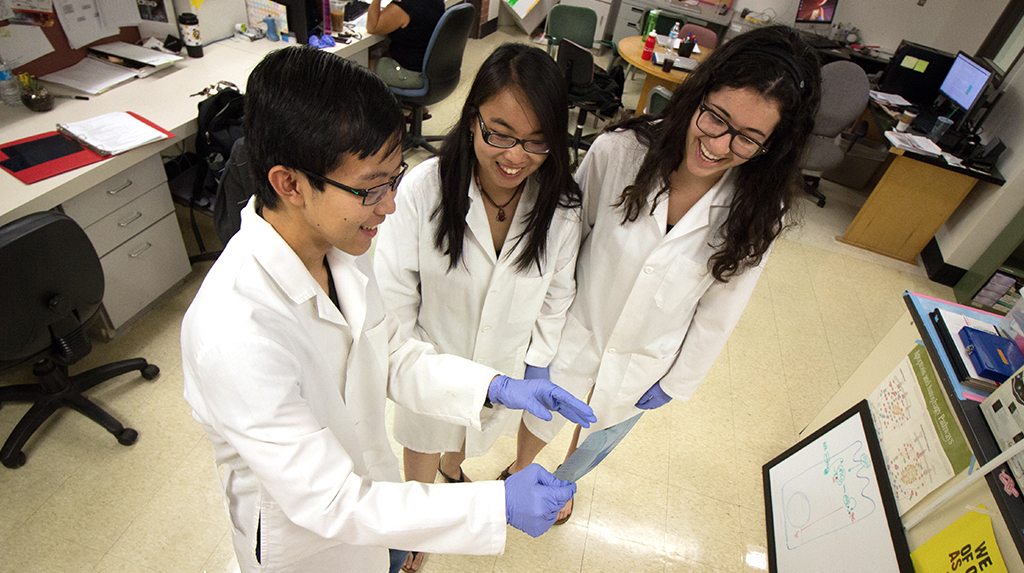
The KEYS (Keep Engaging Youth in Science) Program at the University of Arizona (UA) allows Arizona students who are gifted in and passionate about bioscience to engage in authentic research opportunities through internships. During the seven-week summer experience, they learn about laboratory work and how to read research papers, and present to a varied audience at a poster showcase. The main programmatic goals are to foster in participants new knowledge, skill development, and self-efficacy. Approximately 25–30% of interns stay in residence halls during the program; the remainder commute to campus from the Tucson area.
Other academic elements that developed over the years are:
- spring preparation for the internship: reading At the Bench (Barker 2005) and taking quizzes on the content,
- weekly seminars and readings to expose students to novel science not encountered in high school, and
- weekly assignments that help them develop the content for their posters and showcase presentations.
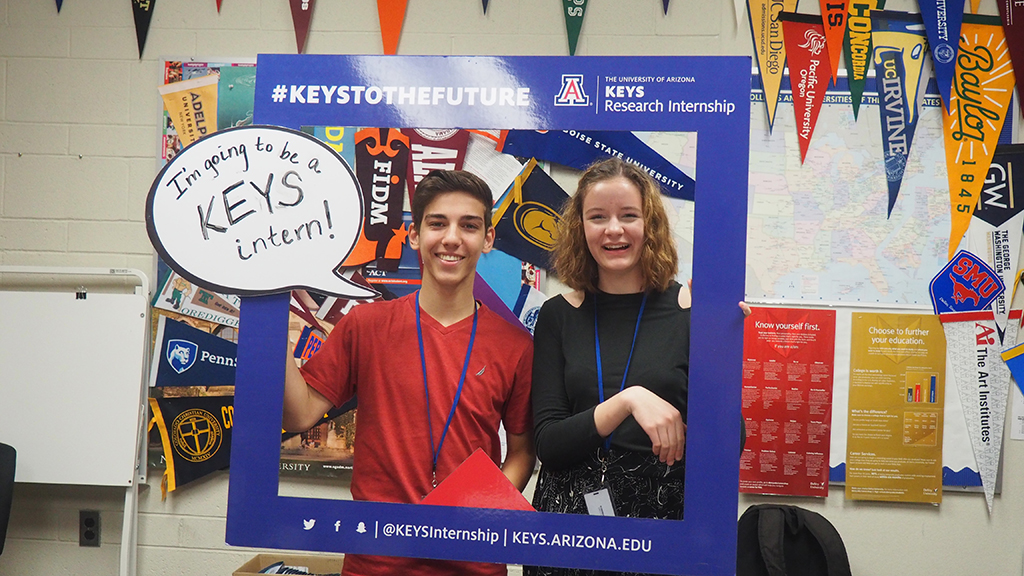
Key social elements of the program include:
- reviewing and responding to written, prompted self-reflections, which help students process their experiences (academic, research, and personal growth) (Davis 2003; for samples, see “Appendix A: Weekly Reflection Prompts” in Resources);
- employing multiple levels of mentorship: near-peer mentors, lab mentors, and program staff mentors; and
- scheduling social activities to balance the rigor of the internship and help strengthen bonds between the interns and program staff mentors.
Some examples of these elements are discussed later in this article.
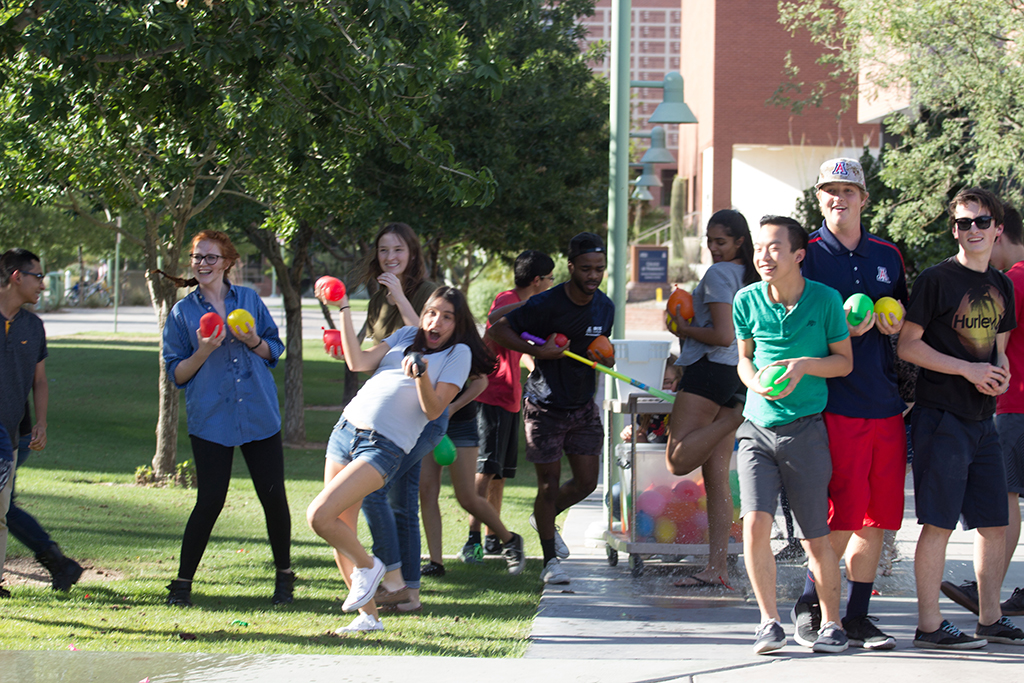
It costs approximately $200,000 per year to run the program, which is supported by several University of Arizona departments, private foundations, private donors, and bioscience organizations. The program employs two program managers and two student staff year-round. During the busiest months, the program expands to include six near-peer mentors, three resident assistants for out-of-town students, and a bioscience teacher. (For information about program structure and support, see “Appendix B: KEYS Program Structure and Support” in Supplemental Resources.)
The program receives wide support from the University of Arizona community and local industry because of its role in the bioscience pipeline (UA Bio5 Institute 2018; Mace 2018). It not only provides opportunities for students to explore career interests, but it also allows them to network and make university connections, increasing the likelihood that they will select the UA for college. (For longitudinal data, see “Appendix C: Longitudinal Data” in Supplemental Resources.)

Program history
The program began in 2007 with a class of nine local high school students, ages 16–18. Students applied and received a small stipend of $600. Students were recruited in Tucson through e-mails to teacher listservs and with a web page. Over the next few years, the program expanded from five weeks to six weeks, with cadres of approximately 24 students. Each student received one week of science literacy and bioscience training, including DNA extraction, electrophoresis, and polymerase chain reaction, led by a UA College of Science faculty member. During the following five weeks, they completed their hands-on laboratory internships with a researcher and received extended training in science literacy (reading, writing, and science communication) with the KEYS director and a high school teacher.
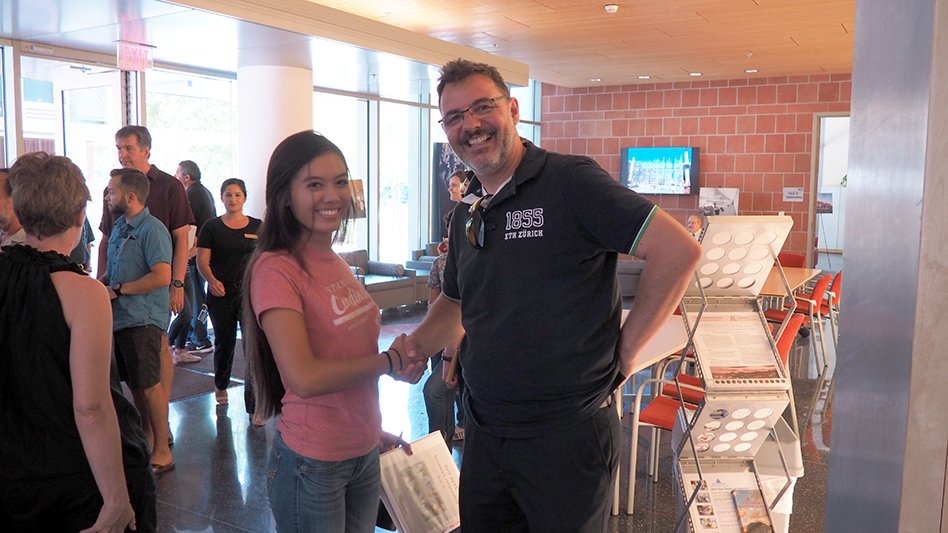
Between 2008 and 2011, the program opened to students across Arizona and began employing KEYS alumni as near-peer support. These near-peers are college students, close in age to participants and usually KEYS alumni, whose roles are to provide guidance and support to students. In 2012, in an effort to be more sustainable and address a desire by leadership to increase the number of interns, KEYS shifted from providing stipends to offering three university-level general science credits at no charge to interns, with scholarship support to cover food, travel, and dorm expenses for any student with financial need. The cadres expanded to approximately 48 interns each year, and the program was extended to seven weeks.
To manage this large group of gifted students and to help them succeed in what for most is a very challenging experience, the program relies on formal and informal mentors. Formal mentors are the program staff, near-peer mentors, and the assigned lab mentor. However, informal mentors, such as friends, family members, other interns, lab peers, donors, and university faculty are essential for meeting the academic, research experience, and social-emotional development needs of the students (Ingram, Mittan, and Lindsey 2018).
KEYS serves a very diverse group of gifted students. Of the 427 alumni, approximately 50% are from underserved populations, the first generation in their family to attend college, speakers of English as a second language, or from Title 1 schools. Including these youth is possible for three reasons: We have a network of school districts, teachers, and program staff who actively recruit at schools across Arizona, our selection process takes diversity into account, and we provide stipends to students who need additional financial support to participate.
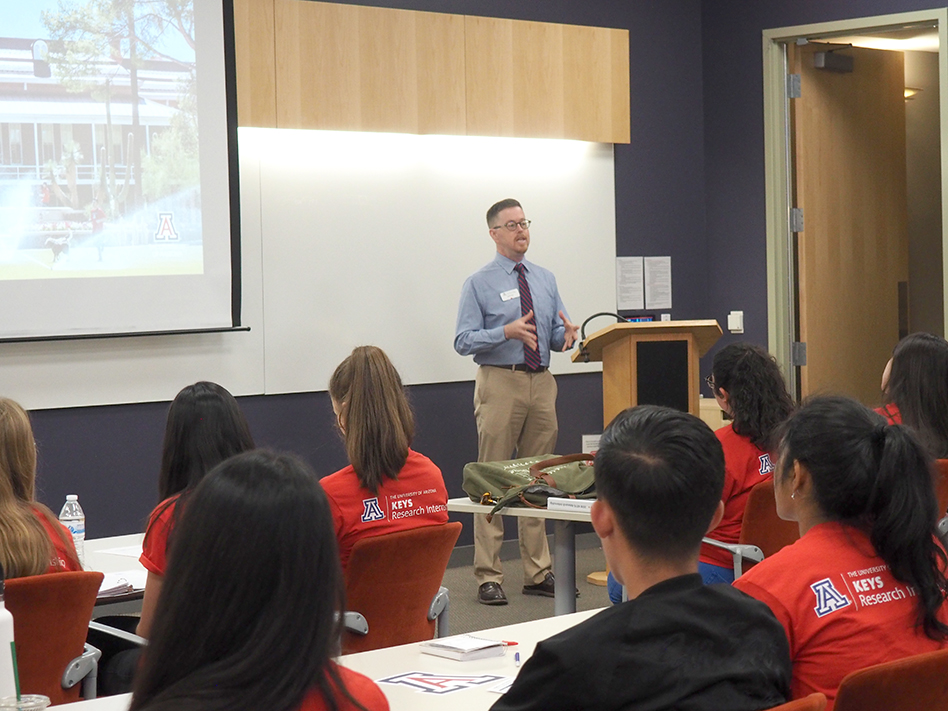
KEYS has become increasingly competitive over time, with approximately 30% of applicants being accepted into the program. Students must submit an application with two references, a letter of interest, and transcripts. To ensure a fair application process, applicant letters are blind-reviewed. Applicants’ passion for science as indicated in their letter of interest and teacher recommendations are just as important as the coursework taken or GPA. Program staff select 70 students to interview, and approximately 48 of these will participate in the internship. Interviews allow staff to further gauge applicants’ scientific interests and their readiness to participate. Academic support in the form of homework and writing assistance is offered during the summer to the interns by program staff and near-peer mentors.
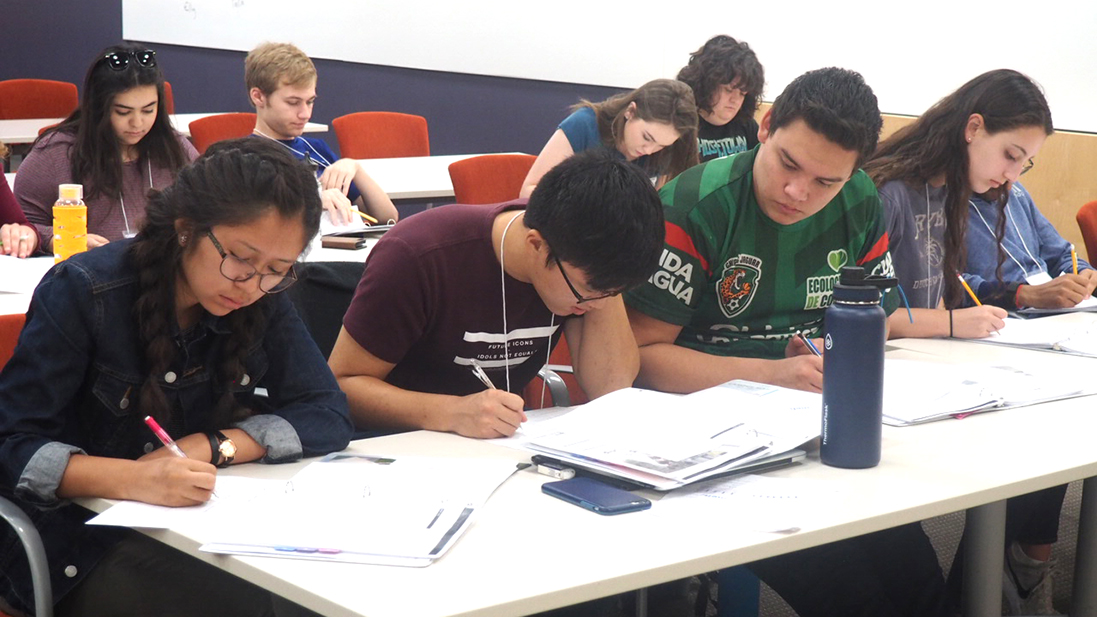
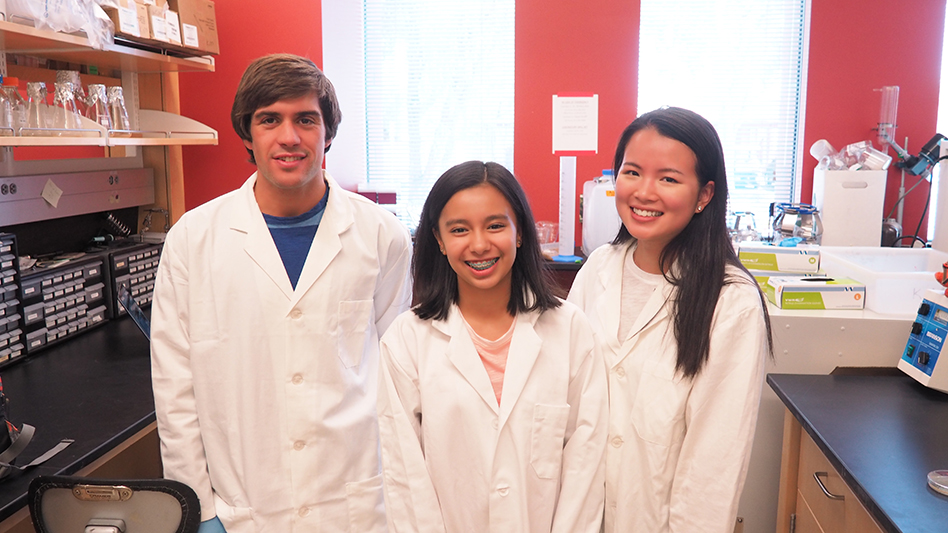
Furthermore, we have a commitment to the belief that outstanding talent is present in children from all cultural groups and across all economic strata (Ross 1994). The National Association for Gifted Children (2010) states that gifted students from all backgrounds need their teachers to be perceptive of their talents and that they need challenging programs and additional support services if they are to develop their ability and realize optimal levels of performance (NAGC 2010). This perspective drives the KEYS program and our suggestions in this article.
We understand the emotional components of giftedness. For example, one intern with a high level of social anxiety was escorted to her lab on the first day by one of the program’s near-peer mentors who had been an intern the year before. He took time to introduce the lab staff to her individually to ensure that she integrated into the lab community. Native American students sometimes experience severe culture shock both in the lab and in their residence hall. Program and lab staff find ways to adapt to these students’ level of comfort so that they can succeed in their own ways and at their own levels.
Evidence of success of the KEYS program
Two consistent findings from the self-reflection review are particularly notable among the diverse gifted population of the KEYS Program. First, early self-reflections are generally marked by interns “doing their duty” by completing yet another assignment but without really needing to make much effort. Or, they overreach in their attempt to display their advanced knowledge or vocabulary. In either case, nearly all interns soon abandon these strategies and truly apply themselves to the challenges set by the prompts, suggesting that they have recognized that they are among peers—true peers—and that neither taking it easy nor showing off makes sense. One intern wrote, “I have realized the difference between asking questions when needed, and asking questions to fill up space. The questions I ask now are thoughtful and meaningful, and they actually help me progress in the lab.”
Second, many of the later self-reflection essays reveal that interns truly do recognize themselves as current and future researchers. While despairing over a lack of useable data, worrying over completing the analysis, or cursing the clock for running too fast, they also share their commitment to not just “their” research, but also the larger project, and often list things they will do differently “next time.” One intern observed, “My biggest accomplishment was not staining plates merely because it provided me with data for my experiment. Rather it was because it taught me the definition of patience, both in and out of a lab, and working hard for your goals. I have learned to think deeper and understand what I am doing and why I am doing it.”

We also review interns’ written work-in-progress assignments throughout the program. (For excerpts from one intern’s assignments, see “Appendix D: Sample Intern Assignments” in Supplemental Resources.) For example, during their first two weeks in their lab, interns draft an early, working version of an introduction to their research. Later, as they prepare for the showcase, they must submit a short, technical abstract of their project for the showcase program. They then craft a 30-second “elevator speech” to introduce their work to anyone in their audience and build a further two-minute presentation to go along with their poster. Finally, they create a set of anticipated audience questions, from general to technical, and develop appropriate responses. In effect, each intern’s collected portfolio of these and other assignments illustrates his or her developing understanding of the research and his or her increasing ability to communicate about it to a range of audiences, from technical reader to layperson.
In an effort to gain more insight about how program participants view the “help” they receive throughout the program, beginning with the 2017 program, interns were asked each week to identify the person who helped them most during the preceding week, that person’s position relative to them, and how the person had helped. Overall, interns most frequently identified a member of their lab as a key “helper,” followed by a member of the program staff, and then a family member or friend outside the program. Findings also revealed that the person—as well as his or her position and group affiliation—identified as “helper” changed over time for most interns. Although there is no discernable pattern at the beginning or at the end of the program, one is noticeable at the midpoint. The midpoint is when most students feel a dip in their self-confidence, and they are more likely to seek emotional support from mentors other than those associated with either the lab or the program. Of note for future research on this topic, interns did not necessarily indicate as their key helper a person who was identified by the program as a mentor for them. We believe these findings suggest the value of the program’s design as a complex web of collaborative support that interns learn to operate (Ingram, Mittan, and Lindsey 2018).
Additional outcomes that the program documents include the increased relationships between the University of Arizona and schools, between researchers and teachers, and between prospective students and the UA. One outcome was unexpected: Some of our interns’ research contributions have been credited in peer-reviewed research articles.
The program is also evaluated longitudinally in terms of the number of participants who have completed degrees, degree areas pursued, and location of studies, particularly at the UA or within the state. (For additional details, see Appendix C in Supplemental Resources.)
Program challenges
No year is identical to the year before. Some of the ongoing challenges include shortages in available researchers, shifts in funding and staff, and changing goals among supporting departments.
The intern-to-researcher ratio is usually 1:1. Because researchers are not always able to take a student each year, we must constantly recruit. Some researchers are easy to convince, but others doubt the abilities of high school students or do not have the time or resources to mentor a student. We communicate with potential researchers year-round to ensure that we understand their needs and that they understand our interns’ abilities. We constantly make changes to the program to better address concerns from all. For example, based on intern and lab staff feedback, we changed the software that interns use to create posters. Also, beginning in 2014, the program was extended a week after researchers convinced us that a longer internship would strengthen the interns’ final research results and would be a better investment for the researchers.
One of our biggest challenges began in 2015 when the UA adopted a rigorous minor safety policy (University of Arizona 2018). For details on this policy, see “Appendix E: University of Arizona Minor Policy” in Supplemental Resources. We restructured some facets of KEYS to meet the university’s criteria and adopted some new strategies to successfully meet others. After four program years, some of those changes are fully integrated expectations within KEYS. Still, the KEYS director continues to work closely with the university to refine the policy.
Each year, we have a debriefing meeting to discuss the program and how it can adapt to meet challenges. We discuss issues and possible solutions at regular meetings with stakeholders, researchers, teachers, donors, alumni, grad students, parents, the evaluator, and staff. Despite the program’s size and complexity, we work hard to address challenges head-on and learn from our experiences.
Recommendations to help students with internships
Below are some lessons we have learned based on our years of experience meeting challenges and celebrating successes with KEYS. In effect, these are our self-reflections on a well-established high school internship program. We believe educators at many levels—developing programs, hosting interns, or recommending interns—can benefit from reading and considering what we have learned.
Let students self-select an internship
Your first thought might be to identify the best students and then try to match them to internship experiences. However, an effective internship experience can be transformative for a gifted student who does not perform well in a traditional classroom environment. Our experience has shown that students who hear about our program and approach teachers/counselors on their own are those most likely to succeed. Of course, all educators should provide information about available opportunities to all students, encouraging them to think about how they could benefit from them.
Listen carefully to each student’s interests and goals
Be sure you are hearing the essence of students’ interest, not just the obvious. Gifted students are often encouraged to pursue specific pathways that may not match their interests. Ask questions to ensure they have realistic expectations of the type of role they will play. For example, make sure they are comfortable with animal research and are willing to take training classes before going into a biology lab. We took seriously one intern’s concerned comments about killing the flies she was working with in her lab. She and her mentors adapted her project to focus on nonlethal aspects of the research.
Also, be prepared to think outside the usual types of internships and suggest a variety of ways for students to get experiences. For example, a student interested in neurology and in engineering or computers might pursue an internship where robots are trained to perform human functions to better learn how the brain works or to assist those with neurological conditions. Besides laboratory research, there are many different internship types for students to look into, including those in industry and in academic areas, as well as fieldwork and clinical internships or even internships that use computers to understand data.
Likewise, be open to the many reasons students may have for pursuing an internship. Among the common reasons we hear in our interviews are to better understand their field of interest, to gain scholarship opportunities, to enhance their college applications, or to support work for a competition. Sometimes they do this because others think they should pursue an internship, which may not be the best motivator. We have learned not to assume anything about their goals. We ask them questions such as, “What tasks do you expect to do? What’s something you dream of trying out but don’t think anyone would let you do? What are some other things lower down on your list of possibilities?” Educators can help students prepare for internships by posing similar questions.
Determine that the student really is motivated and accountable
Our program’s success is based on active mentorship—at many levels. We have learned that, to be an active mentor, you must live the expectation of maturity, not just speak it. We believe that it is critical to support but not handhold students as they search for internships, make decisions about where to apply, and complete applications.
Students who receive too much help (whether from educators or family) in applying or completing early assignments are not prepared for the time commitment needed or rigor of an internship and are less likely to succeed. This can be especially challenging for gifted students who overestimate what they are able to do or have less experience asking for help. Encourage them to be accountable early in the process and to learn more about what they can do to better prepare themselves for the internship. In our experience, students will only take on and meet responsibilities if they are expected to do so. Also, consider how you model for students how to use the resources and assistance that are available.
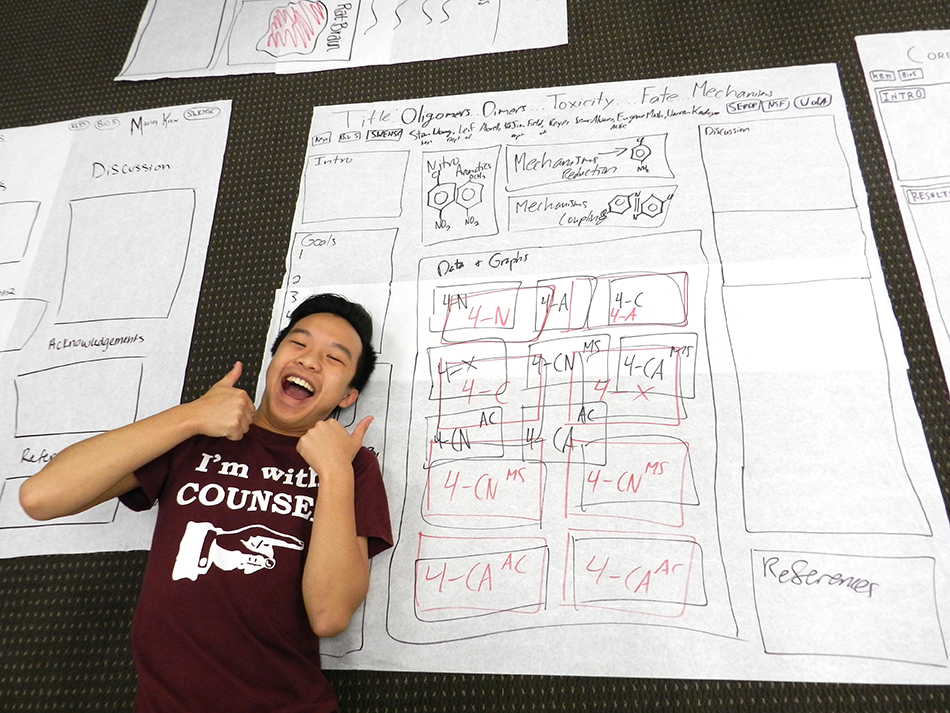
Finally, consider an interesting paradox we have observed in our program. Although none of us would likely recommend an internship to a student who acts irresponsibly in class, turns work in late, or does not share the workload in group assignments, accountability can be found among students who make mistakes—and learn from them, or who show up ready to work—and sometimes do not completely understand what they are doing. Nearly every year of our program has included one or two interns whose early performance was less than stellar; still, they learned to meet, or exceed, the expectations placed on them.
Help students identify their support network
We have found active mentoring a critically important aspect of our internship program. Mentors can be near-peers or peers, undergraduate or graduate students, or assigned faculty. What makes them “active” is their interest in and commitment to providing support beyond merely, “Here’s how to do this.” Interns tell us that it is not just answers to questions that they find helpful; instead, they notice that truly effective mentors sometimes cannot answer questions but are always willing to work right along with their interns to figure out an answer.
Even if students are receiving active mentoring, encourage them to meet regularly with other interns to provide mutual support. Have students explain to each other what they are doing and learning in their internship; most importantly, get them to use these sessions to figure out how to handle the “human” issues they are encountering.
We have also learned that another important type of support is social support. Often, gifted students feel isolated, so being able to talk with students with similar achievements, interests, and experiences can be meaningful and motivating. If possible, arrange a social activity, such as a hike or trip to the movies, so they can find commonalities with each other. In our program, social support also comes from lab members. One group of lab members in our program organized a bowling night that included everyone from the intern to the researcher. This informal activity helped the intern bond with lab members and see themselves as part of a team.
Lastly, encourage students to talk with family to receive the support they need at home. That may mean having fewer chores during their internship, getting permission to sleep in, or approval to cut back on other activities.
Encourage reflective practice
Although keeping a weekly lab journal provides students with some evidence of their work, deeper reflection ensures that the work adds value. Although our program requires interns to submit written reflections that respond to carefully developed prompts (see Appendix A in Supplemental Resources), there are other equally valuable reflective activities such as weekly lab meetings with the lab team, during which they can explain the decisions they have made, suggest possible solutions to problems, and ask for assistance, if necessary. Regular engagement in higher-order thinking for practical purposes pays huge dividends both during and at the culmination of the internship.
If students are not required to do this type of reflection in their internships, consider how you can provide this experience to them. The key is to get beyond the day-to-day narrative of what happened that day. If students engage weekly in these reflective thinking, speaking, or writing activities, they will be taking away much more than hours of experience. On a pragmatic level, we have suggested to some interns that they use one of their weekly reflections as a starting draft for a college application essay.
Encourage a tangible student product
Effective internship experiences include a tangible output that demonstrates what the student has learned and what he or she can do. On the last day of the program, KEYS culminates in a research showcase event where interns present a poster of their research to both general and highly technical audiences. Tangible objects and experiences encourage students to finish processing all that has happened throughout the program and leave with something to show for their work.
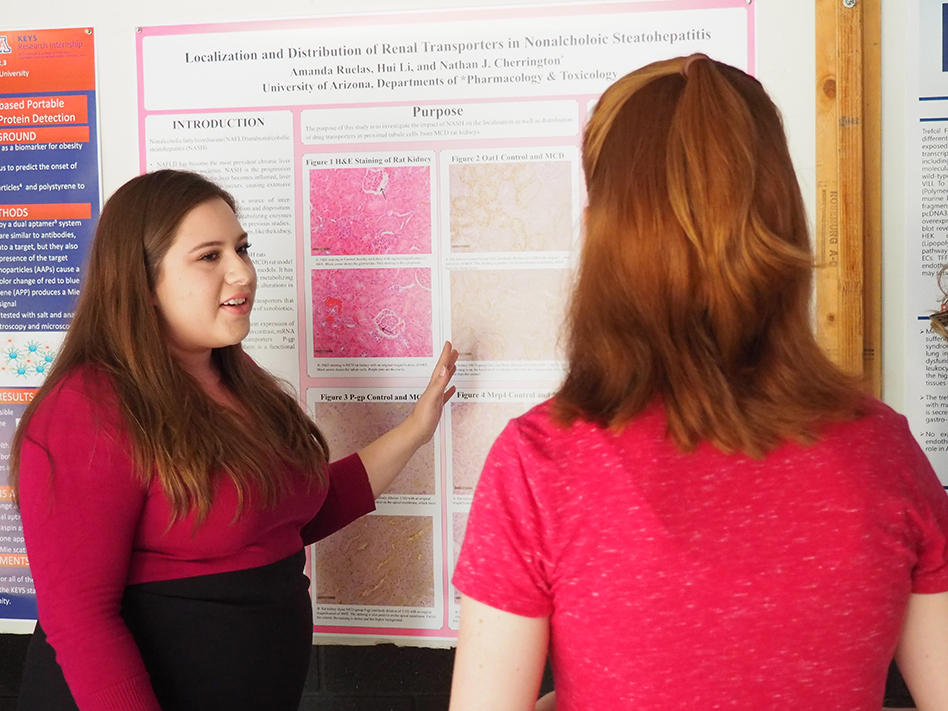
If a program does not offer this opportunity, you can help students devise their own capstone elements, such as a poster or presentation to their classmates explaining their work and how they plan to use their internship experience. Depending on the complexity of the work they did, they may be able to turn part of it into a science fair project. Also, we believe that all students should be encouraged to write about their internship experiences so that they have material to use in college applications.
We have found that a tangible product is especially important to gifted students, because they need real experiences and challenges that encourage persistence and final outcomes that stretch them beyond the predictability of known results. One intern in our program had multiple failed experiments and no data to use or analyze right up to the day she printed her poster. Her printing was delayed twice and she was in a panic. After working with program staff, she pulled together a good poster and presentation. She recently told us, “I just presented a presentation that determines whether I graduated and I excelled due to KEYS. I did an amazing job thanks to the experience I obtained in KEYS. I am thankful for everything you have done [and] for telling me that I can do it.”

Hold debrief or follow-on interviews to identify next steps
After completion, explore the internship experience with students in detail to discover what they learned and how they grew. This is an ideal time for them to reevaluate their goals and interests. If they found the experience engaging and successful, discuss the next logical steps they could take. If not, then explore alternative steps. Show students how to include their experience on college/university applications, scholarship applications, and résumés. Students who complete internships of this sort also need additional and continued challenges and enrichment in science classes. Having a plan in place will be helpful for you and for them.
We are pleased by the number of KEYS intern alumni who continue to work in labs, both as high school students and college students. If time or resources do not allow for this, consider how students can expand on their research internship experience with extra credit work or additional research. Consider incorporating former interns as lab or teaching assistants who can model what they learned, as well as continue to develop.
Provide opportunities to give back to the internship
Finally, we cannot overemphasize the value of veteran program participants as ambassadors, mentors, and advocates for internships. Each year we draw new KEYS near-peer mentors from interns who have completed our program. We know exactly how vital it is for gifted high school students to hear a peer say something such as, “I was allowed to help with the culturing of real human lung epithelial cells!” And who wouldn’t love to do that?
Marti Lindsey (lindsey@pharmacy.arizona.edu) is codirector of the KEYS High School Student Internship Program at the University of Arizona in Tucson, Arizona. Heather Ingram (hci@email.arizona.edu) was codirector of the KEYS High School Student Internship Program at the University of Arizona in Tucson, Arizona, from 2011–2015. Bob Mittan (bmittan@rkkmconsulting.com) has consulted on evaluation and staff training with the KEYS High School Student Internship Program since 2012.


